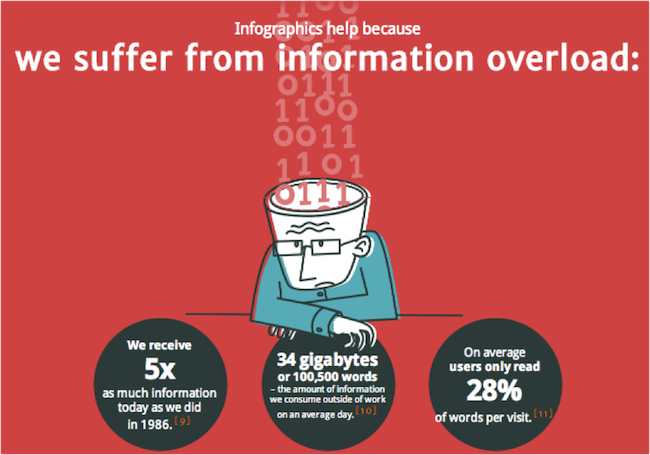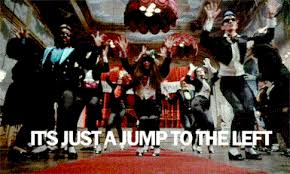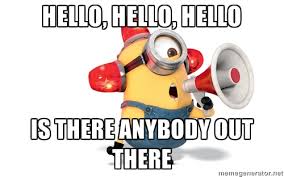 If I’ve seen it once, I’ve seen it over and over again. An organization puts the right people around the table and engages everyone in developing the right written plan for their fundraising campaign or event. They recruit the right people in the right way to work pledge cards or solicit event participants or secure sponsorships. They even go about assigning prospects/donors to volunteer solicitors very effectively. And then it happens . . . solicitation materials are distributed and everything comes to a screeching halt.
If I’ve seen it once, I’ve seen it over and over again. An organization puts the right people around the table and engages everyone in developing the right written plan for their fundraising campaign or event. They recruit the right people in the right way to work pledge cards or solicit event participants or secure sponsorships. They even go about assigning prospects/donors to volunteer solicitors very effectively. And then it happens . . . solicitation materials are distributed and everything comes to a screeching halt.
Why does this happen?
In my experience, the following principles must be in place for volunteer solicitors to thrive:
- The campaign must feel well-organized
- The case for support must be mission-focused and consistently messaged
- Volunteers must be trained and feel supported by staff
- There needs to be a written plan, and those asked to implement it needed to have some part in developing it
- A sense of urgency (positive tenacity not crisis or consequence focused) needs to be genuinely felt by everyone
- Everyone needs to feel accountable to doing what they said they would do
Having two or three of these principles in place isn’t good enough. If you lack one of these “engagement principles,” your fundraising efforts are likely to experience a hiccup of some sort.
One strategy that helps with two or three of the aforementioned bullet points is integration of routine “report meetings” throughout the duration of your campaign timeline.
What is a report meeting?
 A report meeting is simply a face-to-face meeting of volunteer solicitors, who come together to report their progress to each other.
A report meeting is simply a face-to-face meeting of volunteer solicitors, who come together to report their progress to each other.
How these meetings are facilitated is important. An ineffective report meeting is when volunteers give a simple report comprised of a few broad statements. Here is an example of such an ineffective report:
“I’ve called a few of my prospects, and left voicemail messages, but no one has called me back yet. I should be able to get all of my initial calls done by some time next week or the the week after.“
Effective report meetings are:
- Facilitated by one person (which can be a staff person or the volunteer chair of the campaign)
- Volunteers are asked to give their report one at a time
- Volunteers go through their list of prospects/donors one at a time and provide a short progress report on each prospect
- The entire team is invited to provide suggestions, offers of assistance and encouragement at the end of each volunteer solicitor’s report
Here is an example of an effective report:
“Last week, I called Sally and set-up a lunch meeting with her for this Friday. Yesterday, I met Joe and his wife at their lovely home and asked them to consider increasing their pledge from last year. They need some time to think it over, and I have a follow-up meeting schedule with them two weeks from Wednesday. As for John, I’ve called him three times both at home and the office, and he isn’t responding. If anyone sees John this week, please give him a friendly nudge and encourage him to give me a call.“
Keep these meetings focused and organized
 If you’ve recruited the right volunteers with the right skill sets and experiences to work on your fundraising campaign, then these people are likely very busy.
If you’ve recruited the right volunteers with the right skill sets and experiences to work on your fundraising campaign, then these people are likely very busy.
There is no better way to disengage a busy person than by wasting their time. So, these report meetings need to be well-run and efficient.
One person designated as the facilitator can keep the meetings on track, gently move the group along if they end up off-track, and give the entire experience an organized feeling.
Create a sense of F-U-N
Yes, busy people typically dislike nonsense in their meetings, but there are ways to still have fun without it feeling like a waste of time.
One way I’ve seen fun injected into report meetings is by using a campaign theme to organize the report meeting.
For example, I once saw an annual campaign adopt a horse race theme. They met at the racetrack. Each volunteer solicitor was assigned a paper horse on a paper racetrack hung on the wall. There were point values assigned to various activities (e.g. securing a meeting, making an ask, securing the pledge card, etc), which translated into how far your horse moved along the track.
Of course, there were fun prizes and recognition involved in this friendly competition.
I’ve seen these strategies range from highly organized — like the one I just shared — to very simple (e.g. rewarding the number of completed pledge cards turned in at the meeting).
Whatever you decide to do, a little bit of fun can go a long way in making these meetings palatable for busy people.
Integrate mission into the meeting
 We need to keep in mind that no one likes fundraising just for the sake of getting their friends to give them money. The reason volunteers sign-up to do what many people consider difficult and intimidating is because they are truly bought into your mission.
We need to keep in mind that no one likes fundraising just for the sake of getting their friends to give them money. The reason volunteers sign-up to do what many people consider difficult and intimidating is because they are truly bought into your mission.
So, use these report meetings to remind them of why they agreed to do this in the first place.
This can simply be done by dedicating two or three minutes at the beginning of each meeting to a mission moment. It shouldn’t be too long and can be as simple as a:
- testimonial
- short story
- video
Recognition is important
If your report meetings start to feel like beatings, then people will stop coming. In order to avoid this phenomenon, one of my clients started having a little fun with their recognition items. The following pictures are just two examples of inexpensive and creative recognition items you can use.


If the pictures are too small, hopefully you can see that the recognition items are as simple as a bag of Goldfish Crackers and a package of Reese’s Pieces with cute puns attached that recognize the volunteer’s accomplishment. What fun!!!
What if people cannot attend?
I’ve seen a few organizations successfully pull off report meetings via conference call, but not very often. Why? probably because it is too difficult to instill fun, mission-focus and urgency into a phone call. If you want my opinion, I prefer in-person meetings.
If someone absolutely needs to miss a meeting for a good reason, you should ask them to send a written report to be read at the meeting. But these absences need to be rare. Otherwise, everyone else ends up backing out of future meetings.
The best way to ensure good attendance is to set expectations up front during your initial recruitment visit. Clearly explain what you are asking of the volunteer and include report meeting attendance as of those expectation. It is best if you can actually share those meeting dates with the volunteer prospect during the recruitment meeting. (This should also be included in the written job description that you will leave behind after your initial meeting.)
For those potential volunteers who tell you upfront that they are happy to help, but cannot make your meetings, I strongly suggest you thank them for their consideration and not take them up on their offer. Obviously, don’t scorn them . . . but explain how important report meeting attendance is for success and then suggest a different opportunity for them to be involved in the campaign or your organization.
What does your organization do from a campaign strategy perspective to help create accountability, urgency and engagement from your fundraising volunteers? If you’ve used report meetings as a strategy, then what best practices have you used? Please share your thoughts and experiences in the comment box. We can all learn from each other.
Here’s to your health!
Erik Anderson
Founder & President, The Healthy Non-Profit LLC
www.thehealthynonprofit.com
erik@thehealthynonprofit.com
http://twitter.com/#!/eanderson847
http://www.facebook.com/eanderson847
http://www.linkedin.com/in/erikanderson847

 Last week, British voters stunned the world in a number of different ways. First, they voted in a non-binding referendum to invoke
Last week, British voters stunned the world in a number of different ways. First, they voted in a non-binding referendum to invoke  Communications experts refer to this experience as “
Communications experts refer to this experience as “ So, if you are still with me, you might be wondering what can be done to improve the likelihood that donors, board volunteers and staff are hearing (and understanding) what your organization needs them to know. While I am not a communications expert, here are a few thoughts:
So, if you are still with me, you might be wondering what can be done to improve the likelihood that donors, board volunteers and staff are hearing (and understanding) what your organization needs them to know. While I am not a communications expert, here are a few thoughts: Anyone watching television or engaged in community conversations in recent months knows that our communities are entering into another period of time punctuated by values. Some people are talking about life, liberty and happiness. Others of us are focused on equality versus freedom (which are two values that are somewhat mutually exclusive). Perhaps, this elevated values debate is because our country is heading into a divisive Presidential election year. Or maybe it is because big policy debates are underway about LGBTQ and gun rights issues. Regardless, all of this talk has me thinking about the role of values and your non-profit organization’s resource development program.
Anyone watching television or engaged in community conversations in recent months knows that our communities are entering into another period of time punctuated by values. Some people are talking about life, liberty and happiness. Others of us are focused on equality versus freedom (which are two values that are somewhat mutually exclusive). Perhaps, this elevated values debate is because our country is heading into a divisive Presidential election year. Or maybe it is because big policy debates are underway about LGBTQ and gun rights issues. Regardless, all of this talk has me thinking about the role of values and your non-profit organization’s resource development program. All of this gets me thinking about the countless discussions I’ve been a part of throughout the years with non-profit staff, boards and fundraising volunteers where difficult fundraising decisions were being made. The following are just a few examples:
All of this gets me thinking about the countless discussions I’ve been a part of throughout the years with non-profit staff, boards and fundraising volunteers where difficult fundraising decisions were being made. The following are just a few examples: I’ve always taken the AFP ethics/values statement to heart, embraced my organization’s set of shared values, and superimposed my own set of individual values. As an Eagle Scout, my individual values have always been rooted in the 12-points of the Scout Law (e.g. trustworthy, loyal, helpful, friendly, courteous, kind, obedient, cheerful, thrifty, brave, clean and reverent).
I’ve always taken the AFP ethics/values statement to heart, embraced my organization’s set of shared values, and superimposed my own set of individual values. As an Eagle Scout, my individual values have always been rooted in the 12-points of the Scout Law (e.g. trustworthy, loyal, helpful, friendly, courteous, kind, obedient, cheerful, thrifty, brave, clean and reverent). Last week I found myself in New Orleans at Boys & Girls Clubs of America’s national conference sitting in an exhibitor booth trying to make new friends and connect with old ones. On Wednesday, right before the exhibitor area opened, I was visited by a fellow exhibitor from
Last week I found myself in New Orleans at Boys & Girls Clubs of America’s national conference sitting in an exhibitor booth trying to make new friends and connect with old ones. On Wednesday, right before the exhibitor area opened, I was visited by a fellow exhibitor from  “Hey, you got peanut butter in my chocolate!”
“Hey, you got peanut butter in my chocolate!” For the last few decades, the non-profit sector has been focused on data in an effort to convince donors to continue their philanthropic support. I still remember being a new executive director sitting in my first United Way meeting and learning about constructing logic models and differentiating between inputs, outputs, outcomes and pre- and post-test survey tools. All of this was piled on top of a slew of other data metrics my national office was asking for such as:
For the last few decades, the non-profit sector has been focused on data in an effort to convince donors to continue their philanthropic support. I still remember being a new executive director sitting in my first United Way meeting and learning about constructing logic models and differentiating between inputs, outputs, outcomes and pre- and post-test survey tools. All of this was piled on top of a slew of other data metrics my national office was asking for such as:
 This month DonorDreams is hosting the nationally acclaimed
This month DonorDreams is hosting the nationally acclaimed  Recruit a handful of volunteers who don’t mind calling people and asking for money
Recruit a handful of volunteers who don’t mind calling people and asking for money I sometimes wish those cool phones used by the characters from the Matrix movies could be used today for time travel. Because if that was an option, I would totally go back in time to my first phone-a-thon in the late 1990s. I would tell my younger-fundraising-self the following:
I sometimes wish those cool phones used by the characters from the Matrix movies could be used today for time travel. Because if that was an option, I would totally go back in time to my first phone-a-thon in the late 1990s. I would tell my younger-fundraising-self the following: As many readers know, I was once an executive director for a non-profit organization that ran a Duck Race fundraiser. For those of you who don’t know what a Duck Race is, it is simply a raffle where serial numbers on the bottom of little rubber ducks correspond to numbered adoption papers sold to donors. The first 10 ducks that cross a water raceway finish line win prizes. The challenge from a revenue perspective is essentially two-fold:
As many readers know, I was once an executive director for a non-profit organization that ran a Duck Race fundraiser. For those of you who don’t know what a Duck Race is, it is simply a raffle where serial numbers on the bottom of little rubber ducks correspond to numbered adoption papers sold to donors. The first 10 ducks that cross a water raceway finish line win prizes. The challenge from a revenue perspective is essentially two-fold: In the 1986 box office flop
In the 1986 box office flop  As a teenager, I was a
As a teenager, I was a  Instead of picking up the phone and talking to mail professionals, that 31-year-old executive director decided to engage a few friends and do a 12,000 piece mailer by himself. Uh-huh. I thought it would be easy to:
Instead of picking up the phone and talking to mail professionals, that 31-year-old executive director decided to engage a few friends and do a 12,000 piece mailer by himself. Uh-huh. I thought it would be easy to: As a young Boy Scout professional in the 1990s, I was just starting to learn may way around fundraising principles and best practices. While I previously had helped out with a few special events and written a grant proposal for another organization, I never helped plan-organize-implement an annual campaign pledge drive, which is what I was being asked to do with a group of Friends of Scouting (FOS) volunteer within my district.
As a young Boy Scout professional in the 1990s, I was just starting to learn may way around fundraising principles and best practices. While I previously had helped out with a few special events and written a grant proposal for another organization, I never helped plan-organize-implement an annual campaign pledge drive, which is what I was being asked to do with a group of Friends of Scouting (FOS) volunteer within my district. Fast forward a number of years into the future when I was a first-time executive director for a Boys & Girls Club.
Fast forward a number of years into the future when I was a first-time executive director for a Boys & Girls Club. Sometimes when I daydream, I see myself standing outside my house in the street with Dr. Emmitt Brown (aka Christopher Lloyd’s character in Back to the Future), waiting for the lighting storm so I can jump into that
Sometimes when I daydream, I see myself standing outside my house in the street with Dr. Emmitt Brown (aka Christopher Lloyd’s character in Back to the Future), waiting for the lighting storm so I can jump into that